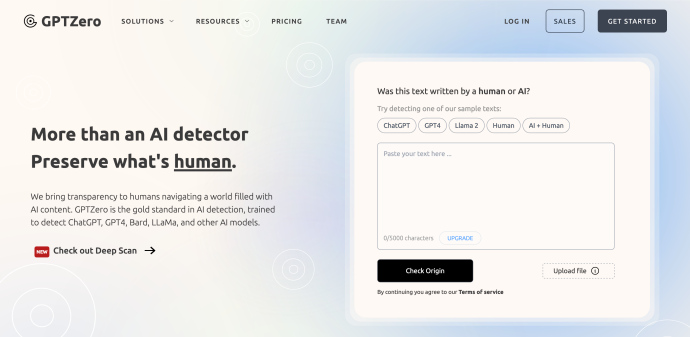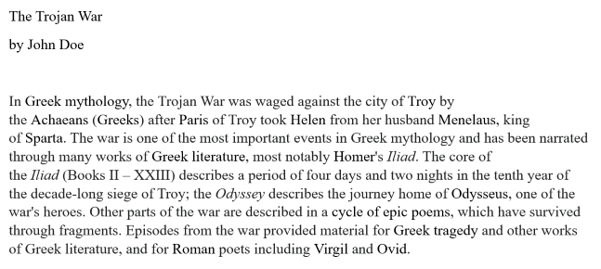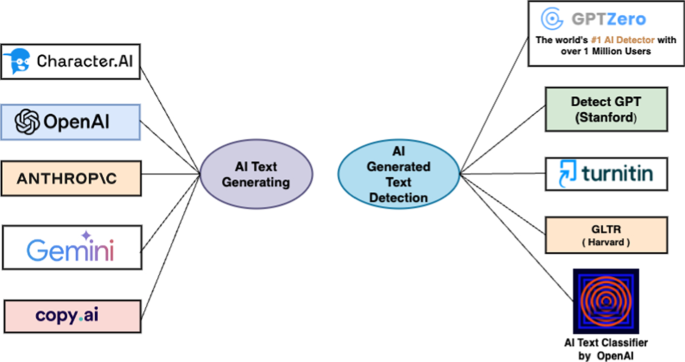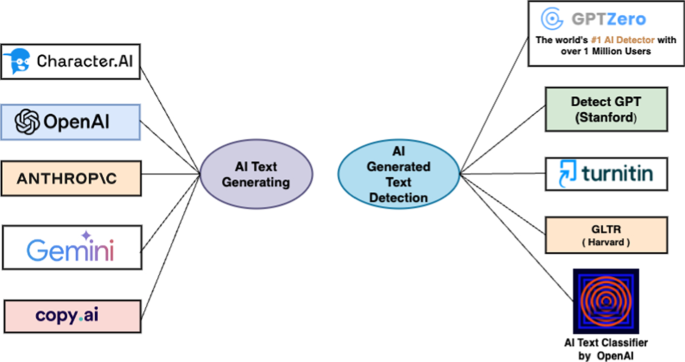Mastering AI Content Detection in 2025: GPTZero as the Academic Shield
Mastering AI Content Detection in 2025: GPTZero as the Academic Shield
In 2025, the landscape of content creation is dramatically transformed by the proliferation of AI-generated text. From academic essays to journalistic articles, discerning between human and machine authorship has become a crucial skill for educators, content creators, and professionals alike. In this article, I will explore how GPTZero.app serves as an essential tool for identifying AI-generated content, boasting an impressive accuracy rate of over 95%, and supporting multiple languages. Join me as I delve into its technical edges, practical applications, and strategies to enhance academic integrity.

The Rise of AI-Generated Content
Artificial intelligence has revolutionized content creation, allowing individuals and organizations to produce written material quickly and efficiently. However, this convenience has a downside: the potential for academic dishonesty and the dilution of original thought. With tools like ChatGPT and GPT-4 generating human-like text, distinguishing between AI-generated and authentic content is more important than ever. As I navigated this new reality, I found myself asking: How can we ensure academic integrity in a world where AI writing is pervasive?
The Need for AI Content Detection Tools
As I began my journey into understanding AI content detection, it became clear that the stakes are high. Educators are increasingly concerned about students submitting work that is not their own, while content creators face the challenge of maintaining originality in a saturated market. This is where AI content detection tools come into play. They empower users to identify AI-generated text and uphold standards of authenticity.
Introducing GPTZero
Among the myriad of tools available, GPTZero stands out as a leading AI content detection tool. Developed by Edward Tian, this platform has gained traction not only for its accuracy but also for its user-friendly interface. With capabilities to detect AI-generated content across various languages, GPTZero has become the go-to choice for educators and content creators worldwide.
Technical Edge: How GPTZero Works
GPTZero operates on sophisticated algorithms that analyze text for specific characteristics indicative of AI authorship. Two key metrics used in this analysis are perplexity and burstiness:
- Perplexity: This measures the complexity of the text. Higher perplexity scores often suggest human authorship, as they indicate varied sentence structures and vocabulary.
- Burstiness: This metric assesses the variability of sentence lengths and structures within the text. A high burstiness score usually aligns with human writing, which tends to exhibit more variation compared to AI-generated content.
By leveraging these metrics, GPTZero can accurately identify AI-generated text with an impressive detection accuracy.
Accuracy and Limitations
While GPTZero boasts an accuracy rate of over 95%, it’s important to note that no AI detection tool is infallible. The accuracy tends to vary based on the nature of the text submitted. For instance, texts heavily modified after generation may pose challenges for detection. Moreover, as highlighted in the reference article, edge cases exist where human-written text may be misclassified as AI-generated, and vice versa.
Despite these limitations, GPTZero remains a powerful ally in the battle against academic dishonesty. By providing educators with a reliable means of assessing student work, it helps to foster a culture of integrity in educational institutions.

Real-World Use Cases of GPTZero
Having explored the technical aspects of GPTZero, I wanted to understand how it is being utilized in real-world scenarios. Through conversations with educators, journalists, and content creators, I gathered insights into the diverse applications of this AI content detection tool.
In Education
Educators are increasingly using GPTZero to check for instances of academic dishonesty. By integrating the tool into their assessment processes, they can effectively identify work that may have been generated by AI. This allows them to uphold academic integrity while encouraging students to engage in original thought and expression.
In Journalism
For journalists, maintaining trust with readers is paramount. GPTZero serves as a safeguard against unintentional plagiarism or reliance on AI-generated content. By utilizing the tool, journalists can ensure that their work is original, thereby preserving the credibility of their reporting.
In Content Creation
Content creators, especially in the marketing domain, find GPTZero invaluable for maintaining the integrity of their work. As AI-generated content becomes more prevalent, the ability to discern between human and machine authorship is crucial for crafting engaging and authentic narratives.
Multilingual AI Detection
One of the standout features of GPTZero is its multilingual support. In our increasingly globalized world, the ability to detect AI-generated content in various languages is a significant advantage. This capability allows educators and content creators worldwide to utilize GPTZero effectively, regardless of the language in which they work.
API Integration for Enterprises
For organizations looking to streamline their content verification processes, GPTZero offers enterprise API integration. This allows businesses to incorporate AI detection capabilities into their existing workflows, enhancing their ability to identify AI-generated content efficiently. By integrating GPTZero into their systems, companies can maintain quality control and uphold content integrity at scale.
Strategies for Preventing Academic Cheating
As I reflected on the role of AI content detection tools like GPTZero in promoting academic integrity, I realized that prevention strategies are equally important. Here are some effective approaches that educators can adopt:
- Redesign Assignments: Craft assignments that require critical thinking and personal reflection, making it difficult for students to rely solely on AI-generated content.
- Incorporate Technology: Utilize tools like GPTZero as part of a holistic assessment strategy, combining AI detection with traditional evaluation methods.
- Educate Students: Foster a culture of integrity by educating students about the importance of original thought and the implications of academic dishonesty.
- Encourage Collaboration: Promote group projects and collaborative learning experiences that emphasize teamwork and creativity, reducing the temptation to use AI-generated content.
Conclusion
As we navigate the complexities of AI-generated content in 2025, tools like GPTZero are essential for maintaining academic integrity and authenticity. With its impressive detection accuracy, multilingual support, and enterprise API integration, GPTZero stands as a powerful ally for educators, journalists, and content creators alike.
By embracing AI content detection tools and implementing proactive strategies, we can collectively foster a culture of integrity in our academic institutions and creative industries.
FAQs
1. What is GPTZero?
GPTZero is an AI content detection tool designed to distinguish between human-generated text and that produced by AI, such as ChatGPT.
2. How does GPTZero work?
The tool uses artificial intelligence to analyze the randomness of a text, helping it decide whether it was written by a human or generated by AI.
3. Can GPTZero help detect all types of AI-generated content?
While GPTZero aims to detect AI-generated content efficiently, no tool can catch every instance perfectly. However, testing shows that GPTZero often spots content created by popular AI tools, such as ChatGPT.
4. Is there a cost to using GPTZero?
You can use the basic features for free with the free version of GPTZero or choose more advanced options at different pricing plans if you need more functionalities for bigger tasks.
5. Are there other tools, like GPTZero, available?
Certainly! Alternatives to GPTZero include Turnitin and Originality AI, which also check texts for signs that they were generated by an AI.
6. In what situations would someone want to use an AI detector like GPTZero?
People might turn to an AI detector when they need assurance that work—such as academic essays or online articles—is original and not written by some form of AI writing tool.
For more information on GPTZero, visit their official website or explore their enterprise solutions.

As we continue to navigate the evolving landscape of AI content creation and detection, I remain optimistic about the role of tools like GPTZero in promoting authenticity and academic integrity. Let us harness these technologies to foster a future where original thought is celebrated, and academic honesty is upheld.

